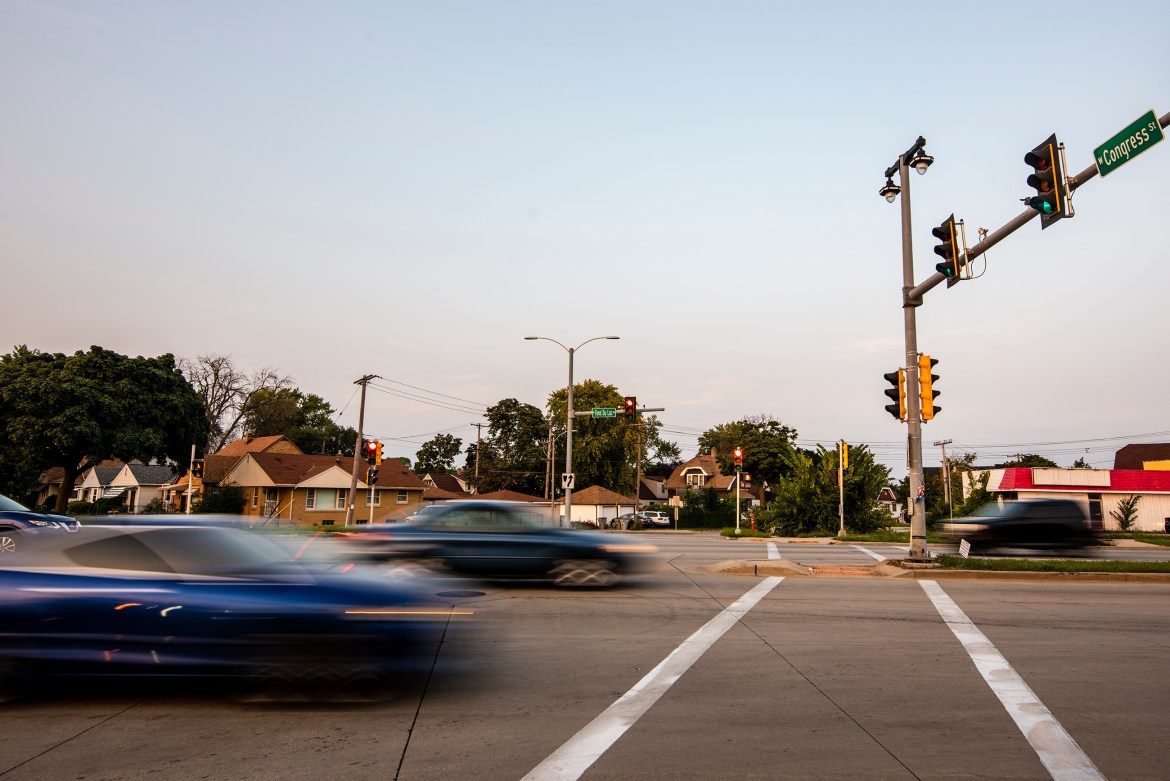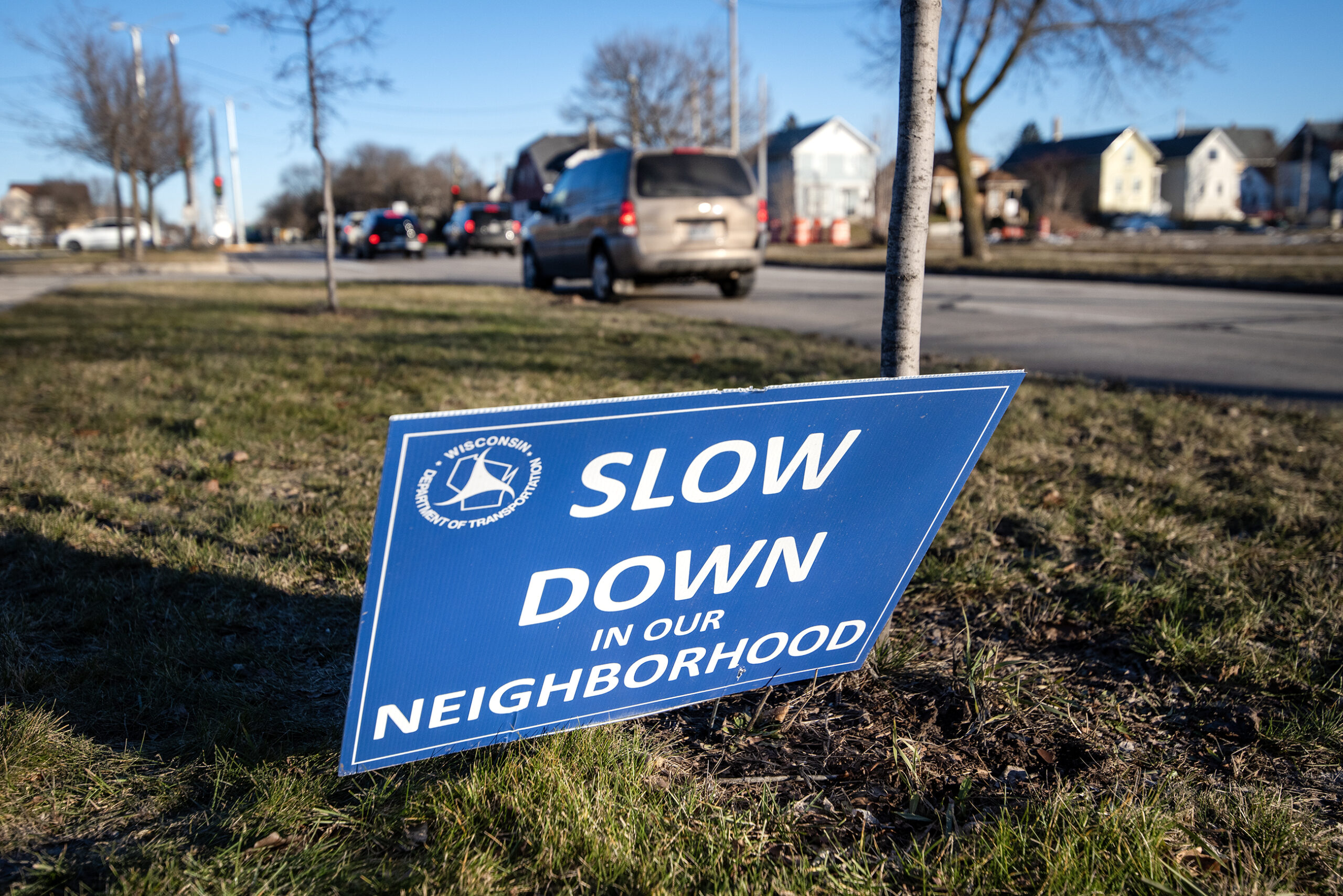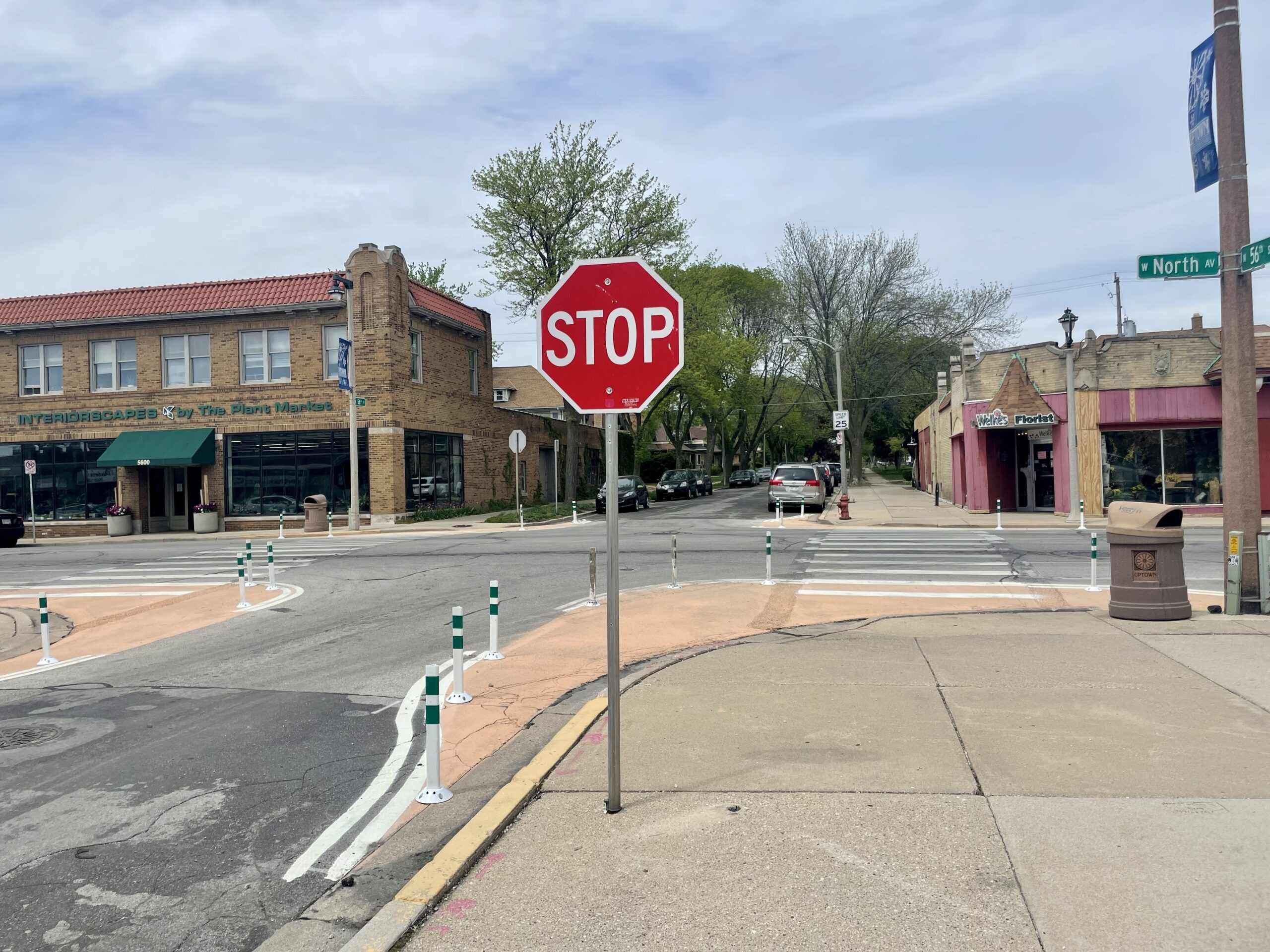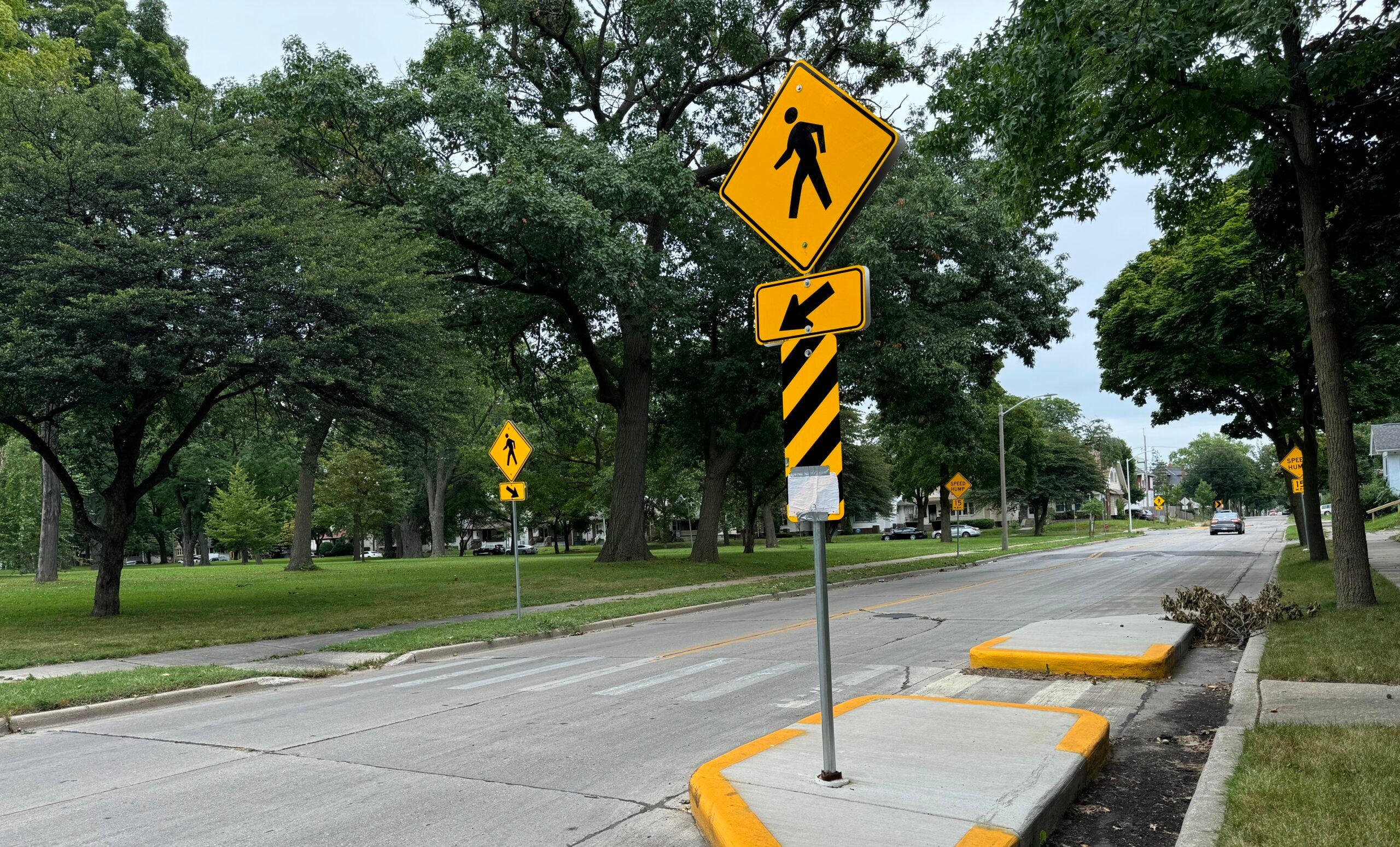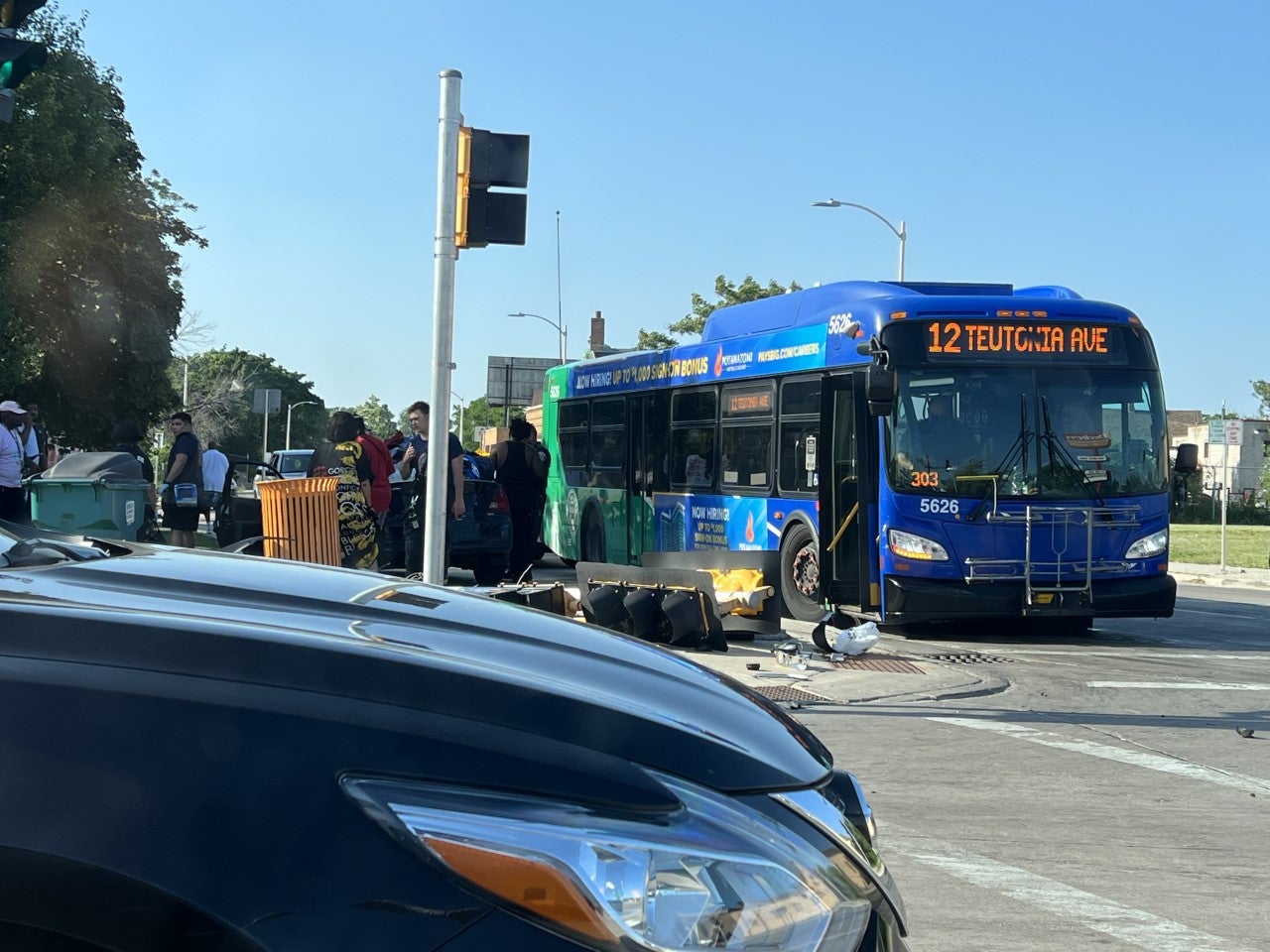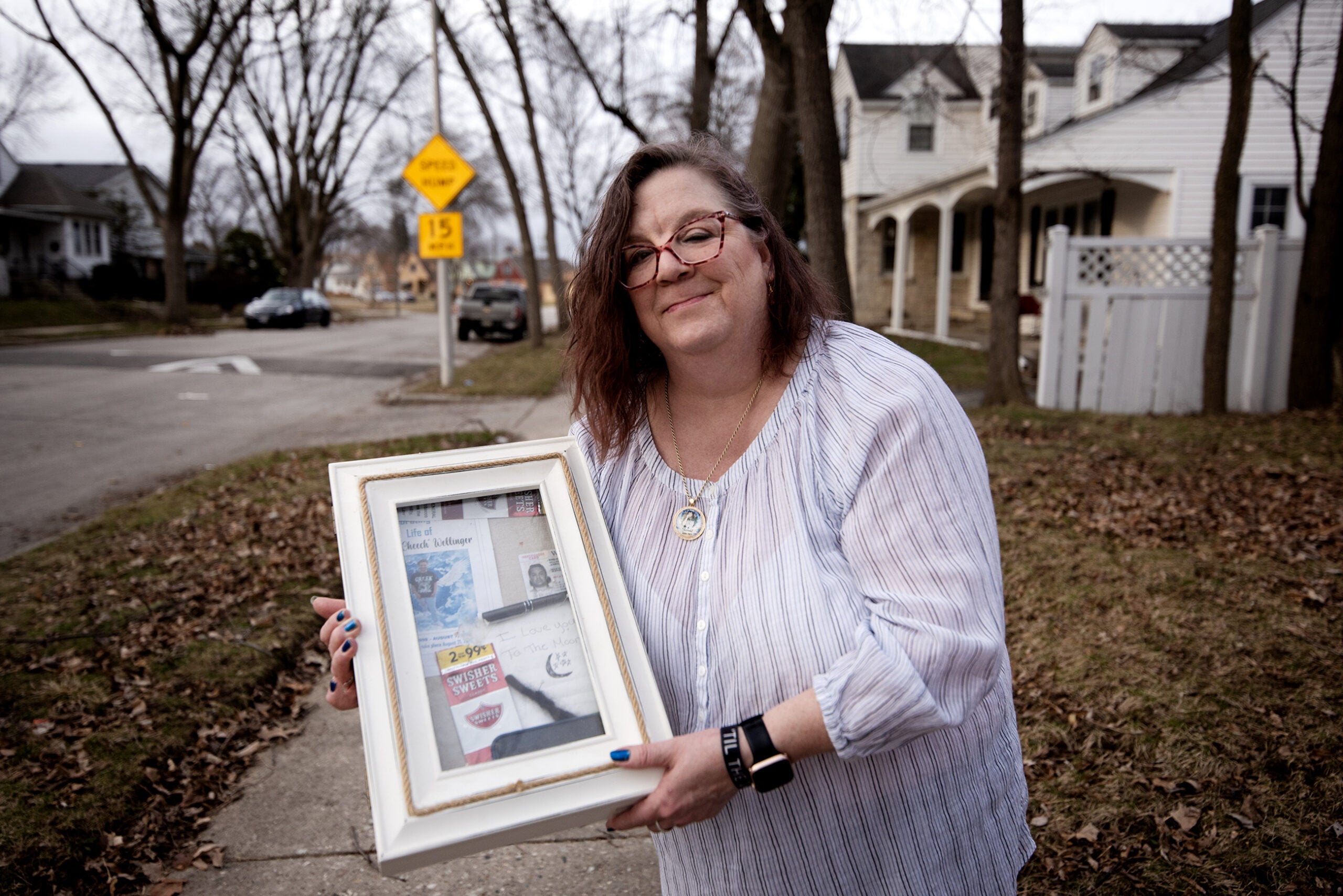Milwaukee officials have unveiled a series of “traffic calming” projects for 2024 in an effort to reduce reckless driving across the city.
The 45 projects, announced Tuesday by the Milwaukee Department of Public Works, include raised crosswalks, curb extensions or bump-outs and “full reconstruction projects” on certain streets. They also include several more protected bike lanes across the city.
Reckless driving has plagued the city for years, but city engineer Kevin Muhs said he believes the work will help make the streets safer for everyone.
Stay informed on the latest news
Sign up for WPR’s email newsletter.
“We want everyone to feel safe and enjoy our streets, whether they’re walking, biking, taking transit or driving,” Muhs said during a press conference Tuesday.
The projects are dispersed throughout Milwaukee and are funded by the city, through state and federal grants and programs, and through federal pandemic relief aid.
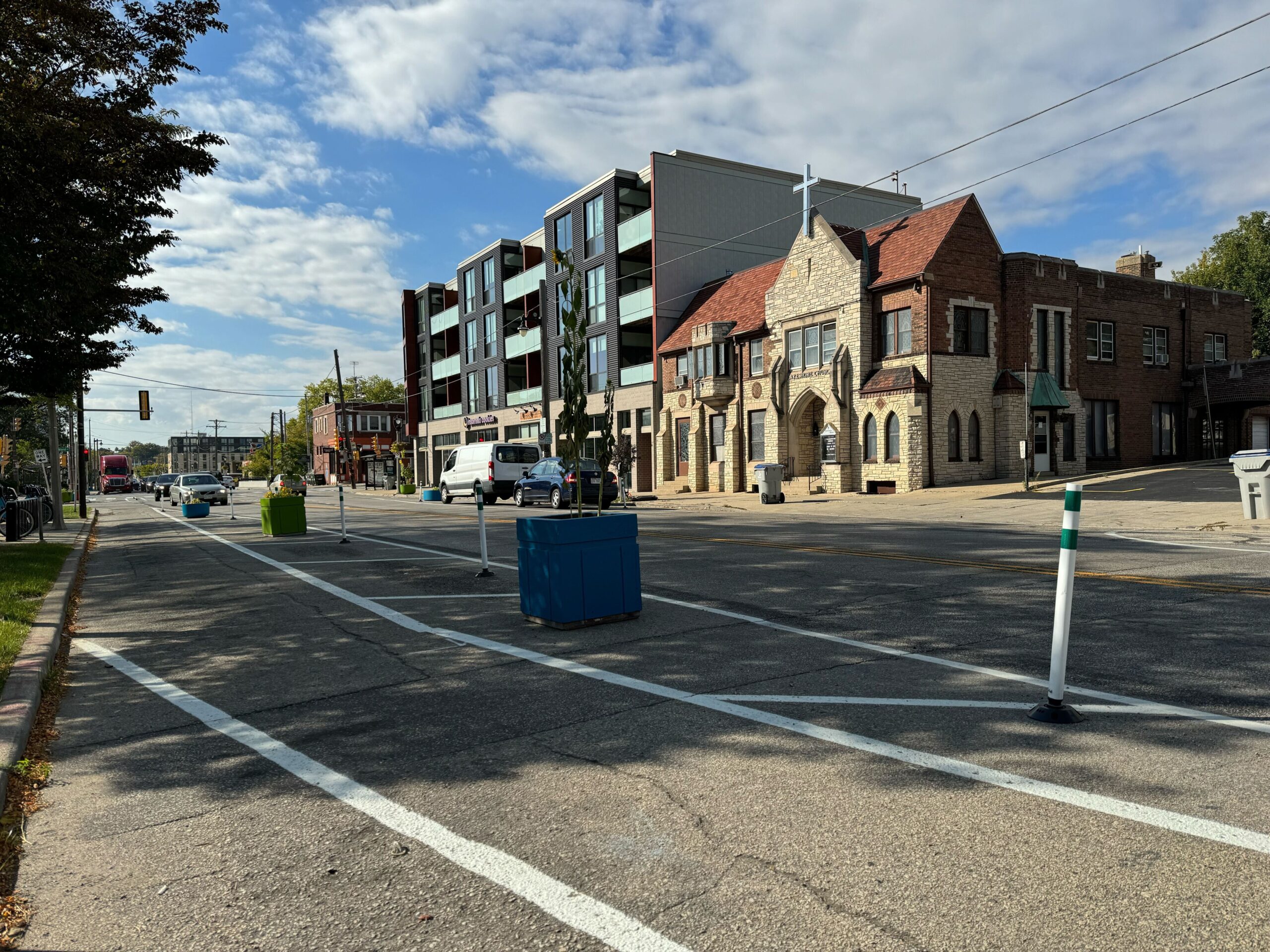
Officials say concrete bump-outs near intersections can help reduce the number of vehicles passing on the right and help protect pedestrians. Work also includes engineering projects like narrowing some streets to one lane, and raised crosswalks and curb extensions near several schools.
Michael Anderson, the youth programs manager for Wisconsin Bike Fed, said that’s a step in the right direction. Anderson said reckless driving near and around schools is something the city has been dealing with for years.
“We’ve got a long way to go to improving child mobility in this city — this is a huge start,” Anderson said.
“Our students should be able to walk and bike to school,” Anderson added. “Making sure that our neighborhoods are built in a way that facilitates youth travel is really important.”
City officials have called reckless driving a “crisis” in the community and have taken a number of steps to tackle the problem. Many believe engineering, education and enforcement are the main ways to address the issue.
“We (common council) felt very strongly, to change people’s behavior, certainly enforcement and accountability and education are important, but sometimes you need to physically change the structure of the streets to force people to be better drivers,” Milwaukee Alder Michael Murphy said at the press conference.
One example of the work the city is doing is along a stretch of the busy Highland Boulevard.
Muhs said last year, the city reduced the number of driving lanes to one in each direction and added concrete bike lanes along a portion of the street. The city is waiting for construction to be complete to collect data on how effective the changes have been, but Muhs said he believes the work has led to safer conditions for residents.
“We know from resident feedback that it has slowed excessive driving speeds, reduced reckless driving and provided a safer environment for people walking and biking in this area,” Muhs said.
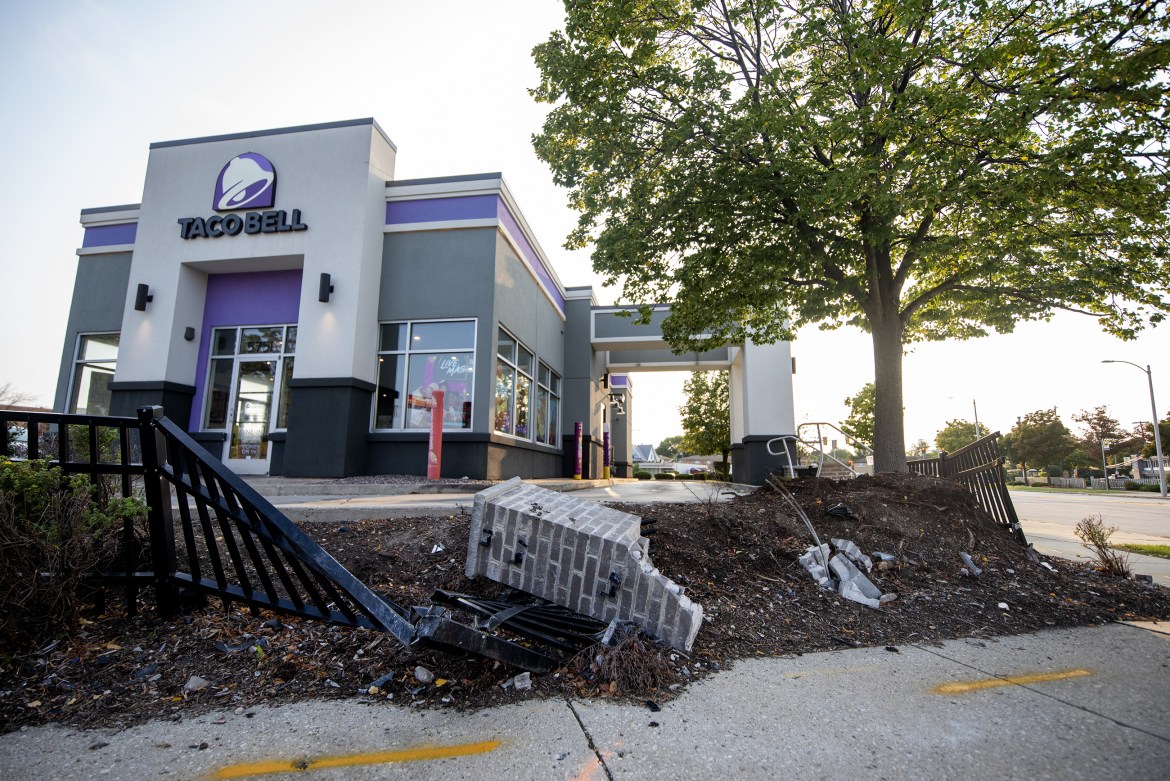
The number of pedestrian fatalities in Milwaukee was significantly higher than in any other county across the state last year, at 21 deaths, according to preliminary data from the Wisconsin Department of Transportation.
A 2023 Milwaukee crash analysis also found that vulnerable street users — which include pedestrians, bicyclists and motorcyclists — are “disproportionately likely to be killed or seriously injured when a crash occurs.” The highest concentration of injuries occur in Milwaukee in posted speed limit zones of 30 to 35 mph, likely due to high speeds and a high number of users.
“We see it with our own eyes. We experience it when we ourselves are on the roads,” Milwaukee Alder Bob Bauman said about the issue. “We’ve been pushing for these changes for a long time, the engineering takes time.”
To keep bicycle riders safe, Milwaukee Mayor Cavalier Johnson announced a goal last year of building 50 miles of protected bike lanes by 2026. Bauman said he believes the protected bike lanes will encourage more people to travel by bike across the city.
“Because right now, on a lot of our streets, it’s actually not very safe to be riding a bicycle,” Bauman said.
Protected bike lanes include physical dividers to separate bikers from pedestrians and vehicles. A 2013 study found they reduce bike-related intersection injuries by about 75 percent, compared to comparable crossings without infrastructure.
“It’s really about building an all ages and abilities network,” Anderson said about the bike lanes.
Madison will also implement a number of traffic calming projects this year. The city plans to use a grant from the U.S. Department of Transportation’s Safe Streets and Roads for All program to make improvements at 21 intersections near transit stops and six shared-use path crossings.
The city will use the federal money to build a sidewalk and path along a portion of a busy highway on E. Washington Ave.
Madison has also been working on improving street lighting, adding curb extensions and increasing flashing lights to remind people when they’re speeding.
Wisconsin Public Radio, © Copyright 2025, Board of Regents of the University of Wisconsin System and Wisconsin Educational Communications Board.

